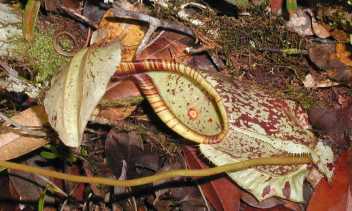



Researcher: Ronald R.E. Vernimmen
Current affiliation: Deltares
Supervisors:
Collaborators:
Duration: 2001-2006
Funding: The Netherlands Foundation for the Advancement of Tropical Research (WOTRO), grant no. W76-217
Heath forest (HF) is a distinctive lowland rain forest type occurring on acid podzol soils developed in siliceous sandy substrates, mostly in the Amazon and Borneo. HF is poorer in species (but high in endemism), simpler in structure, and of lesser biomass than lowland evergreen rain forest (LERF) on clay soils. Also, HFs are particularly vulnerable to disturbance.
There has been a long-standing debate whether the distinctive features of HF are due mainly to nutrient deficiency (notably N and P), water stress (be it drought or persistent waterlogging), or a combination of both. The evidence supporting the drought hypothesis is both scattered and contradictory whereas analysis of the organic topsoils of HF suggests that these are not poorer than those of taller LERF on clay soils.
Concentrations of N in HF leaves and litter are distinctly low, however, suggesting N may be in short supply although bioassays with HF soils using local crops have failed to produce a response after adding nutrients unless the soils were limed. This, together with the very high H/Al ratios found in HF soils suggest that toxicity due to excess acidity may be the prime cause of the poor development of HF although high phenols or silicon levels may be important as well. This WOTRO funded PhD project (W76-217) carried out by Ronald Vernimmen, aims to elucidate the importance of the respective factors / mechanisms controlling forest stature in a series of forests at Barito Ulu, Central Kalimantan, ranging from tall LERF through HFs of increasingly shorter stature. Preliminary results suggest that neither excess nor shortage of water causes reduced forest stature in the study area.